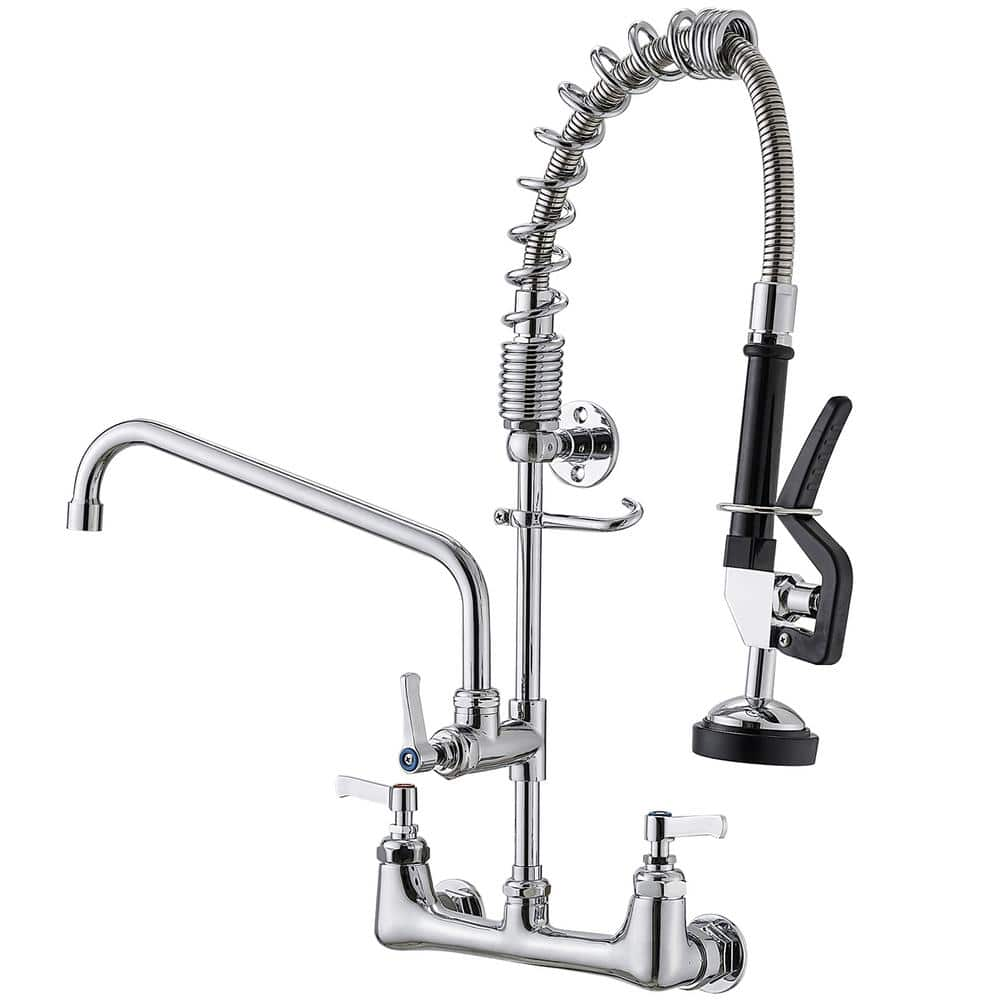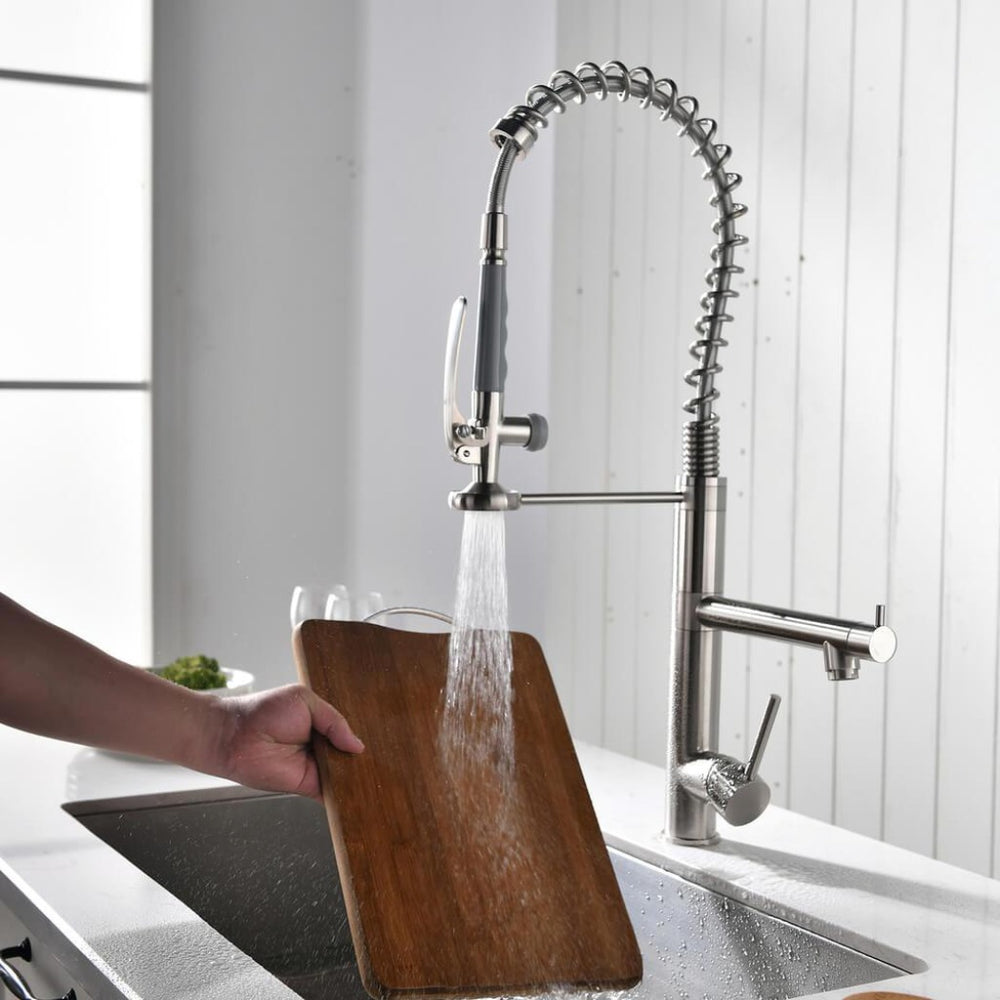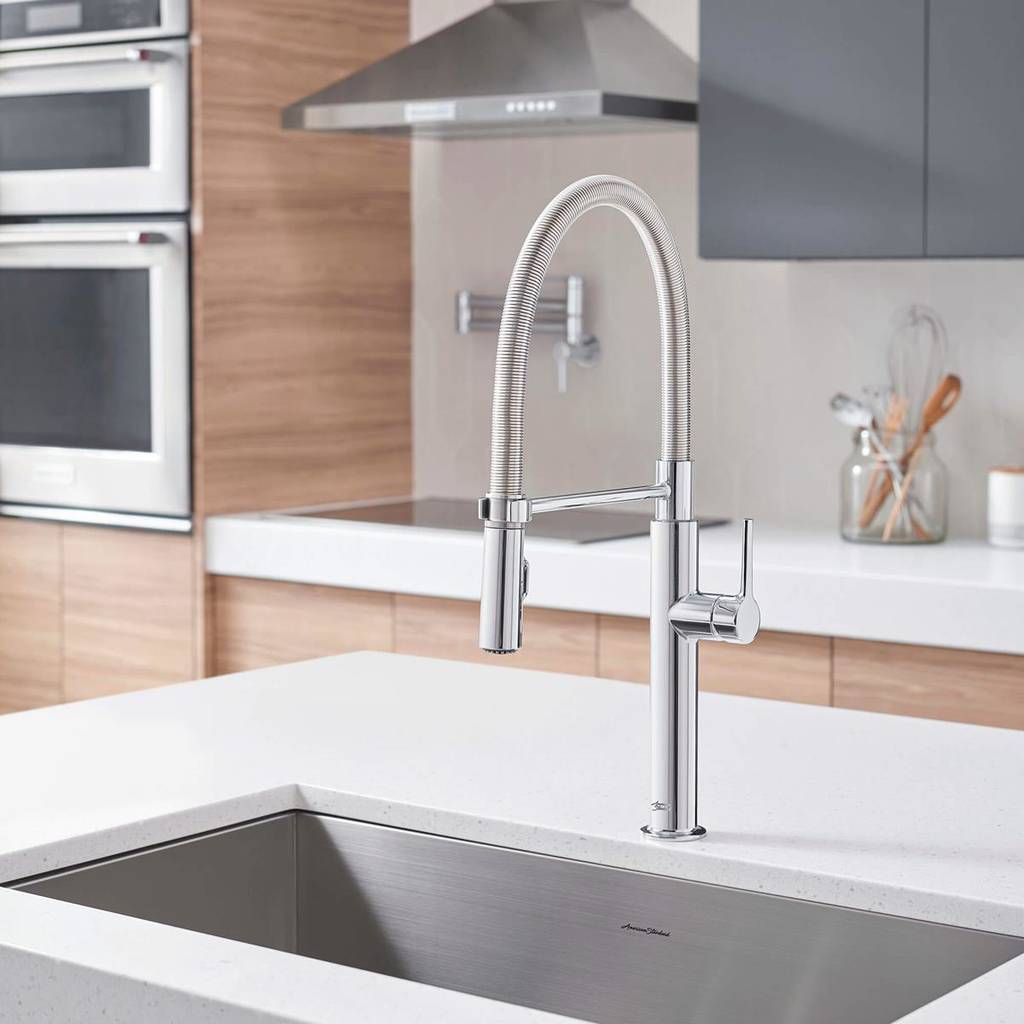Commercial grade kitchen faucets are a vital component in any professional kitchen, as they are used extensively for various cooking and cleaning purposes. The material used in the construction of these faucets plays a crucial role in their functionality, durability, and overall performance. In this article, we will explore the various materials used in commercial grade kitchen faucets and their specific benefits.

Stainless Steel
One of the most commonly used materials in commercial grade kitchen faucets is stainless steel. This material is known for its durability, resistance to corrosion, and ease of cleaning, making it an ideal choice for busy kitchen environments. Stainless steel faucets are also aesthetically pleasing and can enhance the overall look of a commercial kitchen.
Brass
Brass is another popular material used in the construction of commercial grade kitchen faucets. It is known for its durability and resistance to corrosion, making it a reliable choice for high-traffic kitchen settings. Brass faucets also offer a classic and elegant look, making them a desirable option for professional kitchens.
Copper
Copper is a material that has been used in plumbing fixtures for centuries due to its antimicrobial properties and natural resistance to corrosion. Commercial grade kitchen faucets made from copper are not only durable but also have a unique and attractive appearance, adding character to the kitchen space. However, copper faucets may require more maintenance to keep their shine and luster.
Zinc Alloys
Zinc alloys are often used in the construction of commercial grade kitchen faucets due to their lightweight and easy-to-shape properties. These faucets are typically coated with various finishes to enhance their aesthetics and provide corrosion resistance. While zinc alloys may not be as durable as other materials, they are a cost-effective option for commercial kitchens on a budget.
Plastic
While not as common in commercial settings, some kitchen faucets are constructed from high-quality plastic materials. These faucets are lightweight, easy to install, and often come at a lower cost compared to metal options. However, they may not be as durable as metal faucets and may be more prone to damage in a high-traffic kitchen environment.
The choice of material used in commercial grade kitchen faucets
Is an important consideration for any professional kitchen. Each material has its own set of benefits and drawbacks, and the decision should be based on factors such as durability, aesthetic appeal, maintenance requirements, and budget. By understanding the properties of different materials, kitchen owners and managers can make informed decisions when selecting the right faucets for their commercial kitchen.

Installation method of commercial grade kitchen faucets
Commercial grade kitchen faucets are designed to withstand heavy use and provide reliable performance in a high-demand environment. Installing a commercial grade kitchen faucet requires a few specific steps to ensure proper functionality and durability.
Tools and Materials Needed
Before you begin the installation process, it’s important to gather all the necessary tools and materials. Here’s a list of what you’ll need:
- Commercial grade kitchen faucet
- Adjustable wrench
- Plumber’s tape
- Basin wrench
- Bucket
- Towels or rags
- Pipe cutter (if necessary)
- Teflon tape
- Pipe joint compound
Now that you have all the required tools and materials, let’s move on to the installation process.
Turn Off the Water Supply
Before you begin the installation, shut off the water supply to the kitchen faucet. Locate the shut-off valves under the sink and turn them clockwise to close them. If there are no shut-off valves, you may need to shut off the main water supply to the house.
Remove the Old Faucet
Use the adjustable wrench to disconnect the water supply lines from the old faucet. Place a bucket under the connections to catch any water that may spill out. Once the water supply lines are disconnected, use the basin wrench to loosen and remove the nuts that secure the faucet to the sink. With the nuts removed, you can lift the old faucet out of the sink.
Clean the Sink Area
After removing the old faucet, clean the sink area thoroughly to remove any debris or old plumber’s tape. Wipe the area with a clean rag to ensure a clean and smooth surface for the new faucet installation.
Install the New Faucet
Begin by attaching the water supply lines to the new faucet. Apply plumber’s tape to the threads of the faucet connections to create a watertight seal. Use the adjustable wrench to tighten the connections, being careful not to over-tighten them.

Connect the Faucet to the Sink
Place the new faucet into the pre-drilled holes in the sink. Under the sink, use the basin wrench to secure the faucet in place by tightening the nuts onto the faucet’s mounting studs. Make sure the faucet is positioned straight and level before tightening the nuts completely.
Connect the Water Supply Lines
Next, reconnect the water supply lines to the corresponding hot and cold water supply shut-off valves. Wrap plumber’s tape around the threads of the supply line connections and use the adjustable wrench to tighten them securely.
Check for Leaks
Turn on the water supply and check for any leaks at the connections. If you notice any leaks, try tightening the connections further. If the leaks persist, you may need to reapply plumber’s tape or use a pipe joint compound to create a better seal.
Test the Faucet
Once the water supply is back on and there are no leaks, test the new faucet to ensure it is functioning properly. Turn on both the hot and cold water to check for proper water flow and temperature control. Test the handle and spout to make sure there are no issues with water pressure or leaks.
Advantages of commercial grade kitchen faucets
Functionality
Commercial grade kitchen faucets are also known for their superior functionality. These faucets are often equipped with features that make them more practical and convenient for everyday use. For example, many commercial grade faucets feature a pull-down spray head, which makes it easier to clean dishes, fill pots, and rinse produce. The spray head can be maneuvered easily to reach all areas of the sink, making kitchen tasks more efficient and less labor-intensive.
In addition, commercial grade faucets often come with a higher water flow rate, which can be particularly useful in a busy kitchen where a large volume of water is needed for cooking and cleaning. The increased flow rate allows for quick and efficient filling of pots and pans, as well as faster cleaning of dishes and utensils.
Versatility
Another advantage of commercial grade kitchen faucets is their versatility. These faucets are available in a wide range of styles and finishes, making it easy to find a faucet that complements the design of any kitchen. Whether your kitchen has a modern, industrial, or traditional aesthetic, there is a commercial grade faucet that will suit your space. Additionally, many commercial grade faucets are equipped with features such as single-handle operation and 360-degree swivel spouts, which offer flexibility and ease of use.
Furthermore, commercial grade faucets are designed to accommodate a variety of sink configurations, including single and double basin sinks, as well as undermount and drop-in sinks. This versatility allows for greater customization and adaptability in the kitchen, making it easier to find a faucet that meets your specific needs and preferences.

In conclusion
The materials used in commercial grade kitchen faucets vary widely, with each offering a unique set of benefits and considerations. Whether it’s the durability of stainless steel, the classic appeal of brass, the antimicrobial properties of copper, the cost effectiveness of zinc alloys, or the affordability of plastic, there are options available to suit the specific needs of any professional kitchen. Ultimately, the choice of material should be based on a careful consideration of factors such as durability, aesthetics, maintenance, and budget.
